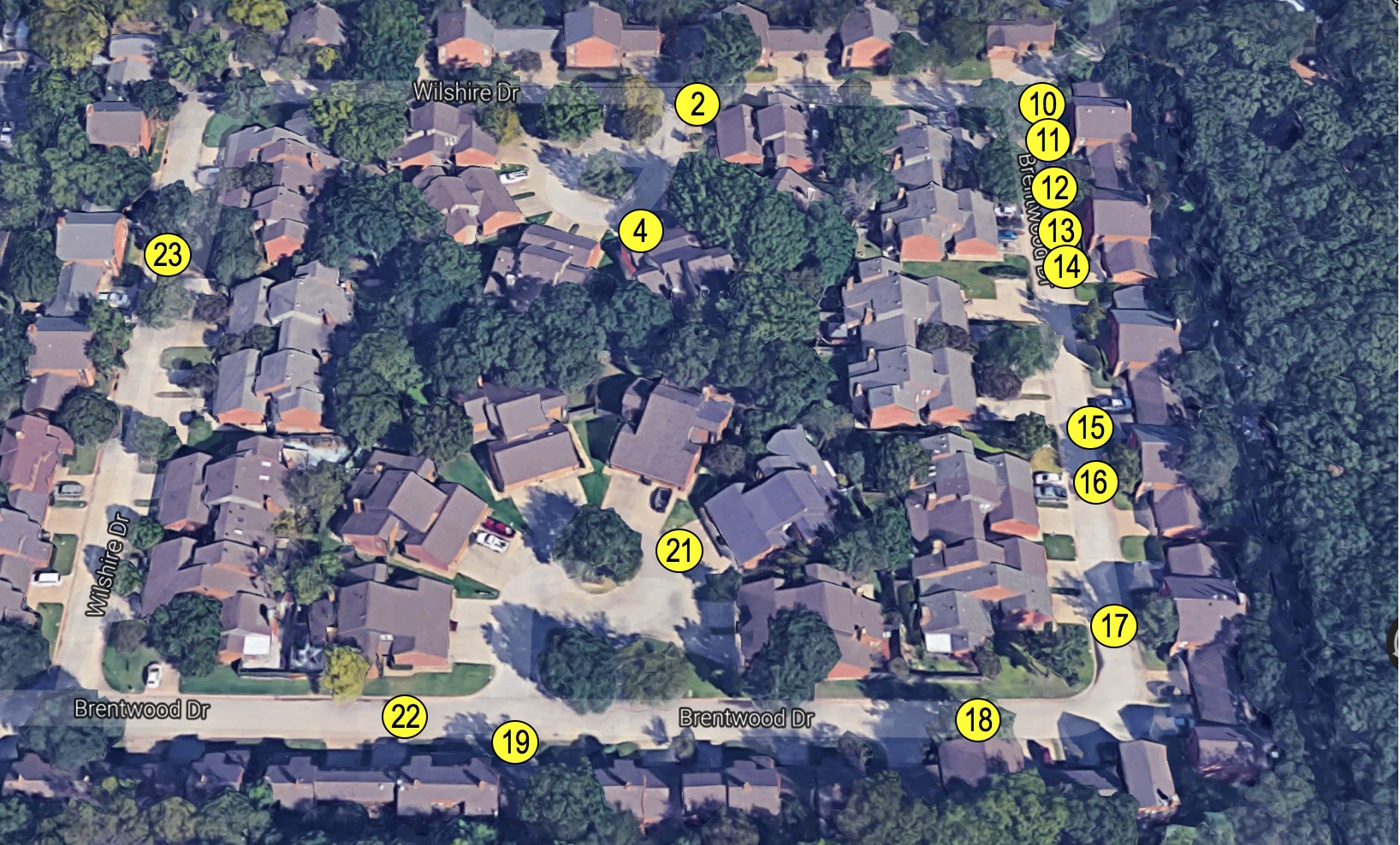 |
 |
  |
 |
PROJECTS    
Major Road Repairs
 Click photo to enlarge Click photo to enlarge
Click yellow numbers for closeups
Click photos to enlarge
The Association poured 4,000 cubic feet of concrete in its first major roadway reconstruction project in the communities 34 year history. 6% of the 64,000 square foot road surface has been replaced. 11 of 16 worst problem areas and a storm water flume were repaired, specifically repair numbers 2, 4, 10, 11, 13, 15, 16, 17, 19, 21, 24, and the surface drain at 1913 Wilshire (click number on the map to see the repair area). The repair sites were published and open for community comment for 30 days. All comments were supportive of the selection which was based on the severity of the breakdown, the impact of not repairing the breakdown on other parts of the roadway, and in the case of repair site #2 and the flume, health and safety with respect to transmission of mosquito borne diseases. Only the most significant concrete failures were repaired because of financial limitations and practical considerations, specifically that there was concern that there might be major problems with the sub base that would require expensive repair (e.g.,storm drain failure). One owner requested that their private drive be repaired by the Association, but later agreed that it was their responsibility and paid the Association to complete the repair.
As part of this project, the storm drains were examined by a robot. The 42 inch underground waterway was found to be in excellent condition. The soil under the road was also in good condition. The most significant issues that lead to road failure appear to be that the concrete was only 3 inches deep in some areas (it was supposed to be six inches) and the stress joints were 20-24 feet apart rather than 15 feet which is the preferred standard. See video here.
All repairs were made with 6 inches or more of concrete and with 12 foot stress joints. The cement used was a "high early" mixture with a 5,000 pound PSI - a much stronger pour.
Long Range Repair Strategy - Beverly Oaks has 190 panels of concrete roadway and 49 of them are in various stages of deterioration (25%). This first repair project will be the first in a series. In the natural aging of the community, concrete repair will be on ongoing process as these 49 panels continue to deteriorate and other start the deterioration process.
The Association opted for full and half panel replacements given the improved strength and much greater life of a full panel vs cutting out damaged areas and putting in a patch inside a panel. A new panel (or splitting a panel in two) has a long life span – 30-40 years. A patch has a shorter life span as it often accelerates the aging and deterioration of the panel it is cut into (7-10 years). In the long term, it is more cost efficient to install long term panels than make many small repairs that will increase the aging of the panel in which they are placed into. Using the "panel" approach, the community can slowly replace the entire roadway over the next 30 years in a quilt-like process. An asphalt overlay was considered, but was not recommended by any of those consulting on the project because of its very short lifespan.
| August 18, 2009 |
The Board of Directors develops a long range capital improvement plan and publishes to the owners. |
| December 12, 2009 |
Owners elect to establish and paying into a capital reserve. |
| January 21, 2011 |
Owners approve a capital spending report for the years 2011 - 2050. |
| February 17, 2012 |
Owners make formal capital improvement planing and saving a legal obligation of the Association and owners. |
| January 20, 2016 |
The Association recommends that capital funds be released to repair the community streets at the Annual Meeting. |
| February 20, 2016 |
The community votes 93% to 7% to release capital funds to repair the roadways in the community. |
| February 23, 2016 |
A preliminary request for proposal is drafted and send to five concrete contractors. |
| April 2016 |
Receipt of preliminary project bids. |
| January 2017 |
Request for detailed bids and work plans. |
| February 2017 |
Finalization of work plans. |
| March 2017 |
Project halted because of concerns about possible costs for subsurface repairs to sewer or storm drains. Alternate work plan under investigation.. |
| June 2017 |
Project put on back burner because other Escalation projects take priority (painting 12 homes, garage foundation repair,. building of package center. |
| October 2017 |
Alternate work plan approved by board. |
| November 14, 2017 |
Robotic Examination of storm sewer as cause of sinkholes.. |
| December 4, 2017 |
Street repairs (phase 1) are completed in eight days. |
THIS PAGE WILL BE UPDATED AS ADDITIONAL INFORMATION BECOMES AVAILABLE
|
|
  |

